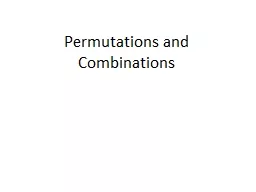PPT-Effects of Cross-Market Combinations:
Author : liane-varnes | Published Date : 2018-09-17
Theory and Evidence from Hospital Markets Leemore Dafny FTC Healthcare Workshop February 25 2015 Motivation Standard horizontal merger theory is about combinations
Presentation Embed Code
Download Presentation
Download Presentation The PPT/PDF document "Effects of Cross-Market Combinations:" is the property of its rightful owner. Permission is granted to download and print the materials on this website for personal, non-commercial use only, and to display it on your personal computer provided you do not modify the materials and that you retain all copyright notices contained in the materials. By downloading content from our website, you accept the terms of this agreement.
Effects of Cross-Market Combinations:: Transcript
Download Rules Of Document
"Effects of Cross-Market Combinations:"The content belongs to its owner. You may download and print it for personal use, without modification, and keep all copyright notices. By downloading, you agree to these terms.
Related Documents














